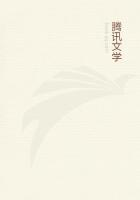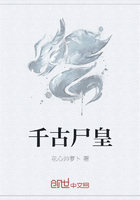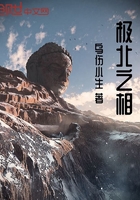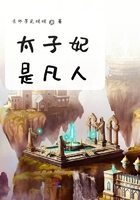6The so-called tethyum or ascidian has of all these animals the most remarkable characteristics. It is the only mollusc that has its entire body concealed within its shell, and the shell is a substance intermediate between hide and shell, so that it cuts like a piece of hard leather. It is attached to rocks by its shell, and is provided with two passages placed at a distance from one another, very minute and hard to see, whereby it admits and discharges the sea-water; for it has no visible excretion (whereas of shell fish in general some resemble the urchin in this matter of excretion, and others are provided with the so-called mecon, or poppy-juice). If the animal be opened, it is found to have, in the first place, a tendinous membrane running round inside the shell-like substance, and within this membrane is the flesh-like substance of the ascidian, not resembling that in other molluscs; but this flesh, to which I now allude, is the same in all ascidia. And this substance is attached in two places to the membrane and the skin, obliquely; and at the point of attachment the space is narrowed from side to side, where the fleshy substance stretches towards the passages that lead outwards through the shell; and here it discharges and admits food and liquid matter, just as it would if one of the passages were a mouth and the other an anal vent; and one of the passages is somewhat wider than the other Inside it has a pair of cavities, one on either side, a small partition separating them; and one of these two cavities contains the liquid. The creature has no other organ whether motor or sensory, nor, as was said in the case of the others, is it furnished with any organ connected with excretion, as other shell-fish are.
The colour of the ascidian is in some cases sallow, and in other cases red.
There is, furthermore, the genus of the sea-nettles, peculiar in its way. The sea-nettle, or sea-anemone, clings to rocks like certain of the testaceans, but at times relaxes its hold. It has no shell, but its entire body is fleshy. It is sensitive to touch, and, if you put your hand to it, it will seize and cling to it, as the cuttlefish would do with its feelers, and in such a way as to make the flesh of your hand swell up. Its mouth is in the centre of its body, and it lives adhering to the rock as an oyster to its shell. If any little fish come up against it it it clings to it; in fact, just as I described it above as doing to your hand, so it does to anything edible that comes in its way; and it feeds upon sea-urchins and scallops. Another species of the sea-nettle roams freely abroad. The sea-nettle appears to be devoid altogether of excretion, and in this respect it resembles a plant.
Of sea-nettles there are two species, the lesser and more edible, and the large hard ones, such as are found in the neighbourhood of Chalcis. In winter time their flesh is firm, and accordingly they are sought after as articles of food, but in summer weather they are worthless, for they become thin and watery, and if you catch at them they break at once into bits, and cannot be taken off the rocks entire; and being oppressed by the heat they tend to slip back into the crevices of the rocks.
So much for the external and the internal organs of molluscs, crustaceans, and testaceans.
7We now proceed to treat of insects in like manner. This genus comprises many species, and, though several kinds are clearly related to one another, these are not classified under one common designation, as in the case of the bee, the drone, the wasp, and all such insects, and again as in the case of those that have their wings in a sheath or shard, like the cockchafer, the carabus or stag-beetle, the cantharis or blister-beetle, and the like.
Insects have three parts common to them all; the head, the trunk containing the stomach, and a third part in betwixt these two, corresponding to what in other creatures embraces chest and back. In the majority of insects this intermediate part is single; but in the long and multipedal insects it has practically the same number of segments as of nicks.
All insects when cut in two continue to live, excepting such as are naturally cold by nature, or such as from their minute size chill rapidly; though, by the way, wasps notwithstanding their small size continue living after severance. In conjunction with the middle portion either the head or the stomach can live, but the head cannot live by itself. Insects that are long in shape and many-footed can live for a long while after being cut in twain, and the severed portions can move in either direction, backwards or forwards; thus, the hinder portion, if cut off, can crawl either in the direction of the section or in the direction of the tail, as is observed in the scolopendra.
All insects have eyes, but no other organ of sense discernible, except that some insects have a kind of a tongue corresponding to a similar organ common to all testaceans; and by this organ such insects taste and imbibe their food. In some insects this organ is soft; in other insects it is firm; as it is, by the way, in the purple-fish, among testaceans. In the horsefly and the gadfly this organ is hard, and indeed it is hard in most insects. In point of fact, such insects as have no sting in the rear use this organ as a weapon, (and, by the way, such insects as are provided with this organ are unprovided with teeth, with the exception of a few insects); the fly by a touch can draw blood with this organ, and the gnat can prick or sting with it.
Certain insects are furnished with prickers or stings. Some insects have the sting inside, as the bee and the wasp, others outside, as the scorpion; and, by the way, this is the only insect furnished with a long tail. And, further, the scorpion is furnished with claws, as is also the creature resembling a scorpion found within the pages of books.

